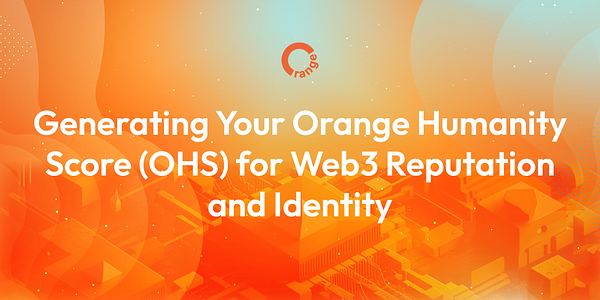Singapore, July 22nd, 2024 – Coinscribble by Coinbound / In Web3, transactions are a vote of confidence. Token Generation Events (TGEs) and airdrops fuel new projects, promising decentralization and community ownership. However, ensuring fair and secure TGE distributions is a common challenge.
Proof of Humanity (PoH) and Sybil resistance mechanisms are essential guardrails that verify real participants and prevent gaming. Implementing these measures preserves decentralization’s ethos.
Understanding the Importance of POH
Proof of Humanity (PoH) is a system designed to verify that participants in a decentralized network are real, unique individuals. It combines biometrics, social verification, and blockchain attestations. Biometrics uses physical characteristics like facial recognition, while social verification leverages peer validation.
Blockchain attestations provide a secure record of these verifications. PoH is essential for identity verification and fraud prevention in Web3. It helps ensure participants are genuine, maintaining trust and fairness by preventing bots and duplicate accounts from skewing token distributions.
Mechanisms like the Orange Humanity Score (OHS) complement these efforts by verifying identities on an even deeper level. The OHS is a measure of authenticity based on both Web3 accounts and activities, in addition to Web 2.0 data points like social accounts and email. Such frameworks are indicative of what the future of POH will look like.
Impact of PoH
Implementing Proof of Humanity (PoH) in token generation events (TGEs) and airdrops offers several key benefits:
- Ensures tokens are distributed to real users, enhancing legitimacy and value.
- Prevents token concentration among bad actors by verifying participant uniqueness.
- Fosters greater community trust and long-term support through a fair process.
- Supports decentralization by enabling equitable token distribution.
Projects like Linea and LayerZero demonstrate that integrating PoH can significantly enhance the integrity and success of decentralized initiatives. These mechanisms are critical for the thriving of the next generation of secure, trusted Web3 projects
Combatting Sybil Attacks
Sybil attacks occur when a single entity creates multiple fake identities to gain an unfair advantage in decentralized systems. These attacks can significantly disrupt the fairness and security of Token Generation Events (TGEs) and airdrops by allowing malicious actors to receive a disproportionate share of tokens.
This not only undermines the integrity of the distribution process but also erodes trust within the community. Sybil attacks can lead to centralization of token ownership, skewing the governance and decision-making processes that are fundamental to decentralized ecosystems and communities.
Detection and Prevention
Preventing Sybil attacks requires a multifaceted approach:
- Multi-Factor Authentication (MFA): MFA adds an extra layer of security by requiring users to verify their identity through multiple methods, such as passwords, biometric data, and one-time codes. This makes it more difficult for attackers to create and manage multiple fake accounts.
- Social Trust Graphs: Utilizing social trust graphs can help in identifying and verifying genuine users based on their interactions and relationships within the network. By mapping out the connections and behaviors of users, it becomes easier to detect anomalies that suggest Sybil attacks.
- Anomaly Detection: Advanced algorithms can analyze user behavior and transaction patterns to identify irregularities that may indicate Sybil attacks. By continuously monitoring the network for suspicious activities, these systems can flag potential threats in real-time, allowing for prompt action.
Projects integrating PoH, like Linea and LayerZero, demonstrate enhanced integrity and success of decentralized initiatives – critical mechanisms for the thriving of secure, trusted Web3 projects.
Linea: Ensuring Fairness with Proof of Humanity
Linea integrates Proof of Humanity (PoH) to foster an inclusive, equitable Web3 ecosystem. PoH verifies each participant as a real, unique individual using biometrics, social verification, and blockchain attestations. This ensures only legitimate users can partake in token events, maintaining fairness and trust.
The PoH implementation has reduced fraud, enabled equitable token distribution, and increased community trust and engagement. Linea’s reputation as a secure, reliable platform has also attracted more users and projects to its ecosystem
LayerZero: Combating Sybil Attacks
LayerZero implements measures to combat Sybil attacks and enhance the security of decentralized applications:
- Multi-factor authentication (MFA) adds extra identity verification, making fake accounts difficult.
- Social trust graphs identify genuine users based on network interactions and relationships.
- Anomaly detection algorithms monitor user behavior to flag suspicious activities.
These comprehensive Sybil resistance measures have successfully prevented attacks, ensuring fair token distributions and decentralized processes. This has increased community trust and platform stability, enabling LayerZero to foster a secure, decentralized environment.
Best Practices and Future Directions
To effectively implement PoH and Sybil resistance, projects should consider the following best practices:
- Technological Solutions: Utilize advanced technologies such as biometrics, social verification, and blockchain attestations to verify user identities. Implement multi-factor authentication and anomaly detection algorithms to enhance security.
- Community Involvement: Engage the community in the verification process through social trust graphs and peer validation. Foster a sense of ownership and responsibility among participants to maintain the integrity of the ecosystem.
- Continuous Monitoring: Regularly monitor user behavior and transaction patterns to detect and prevent fraudulent activities. Use real-time monitoring tools to respond promptly to potential threats.
Future Trends
As Web3 evolves, new PoH and Sybil resistance trends may emerge, such as advanced biometrics, social verification, and anomaly detection. AI and ML could enhance the accuracy and efficiency of these mechanisms, though challenges like privacy and scalability must be addressed.
Implementing PoH and Sybil resistance is crucial for fairness and security in token events, as demonstrated by Linea and LayerZero. By adopting best practices and staying informed on future trends, projects can build a more inclusive, trustworthy Web3 ecosystem. The focus on these mechanisms will remain essential for a secure, decentralized future.
For more information about Orange Protocol and to stay updated on the latest developments, visit orangeprotocol.io or join the conversation on Twitter and Discord.
About Orange Protocol
Orange Protocol is a pioneering platform dedicated to revolutionizing reputation management for Web3 users. By consolidating identities and reputations across multiple chains and platforms into minted NFTs, Orange Protocol empowers individuals to own and showcase their achievements universally. For organizations, it offers powerful tools to engage and evaluate communities based on comprehensive reputation metrics, driving more accurate user segmentation and engagement. Discover more at orangeprotocol.io.




